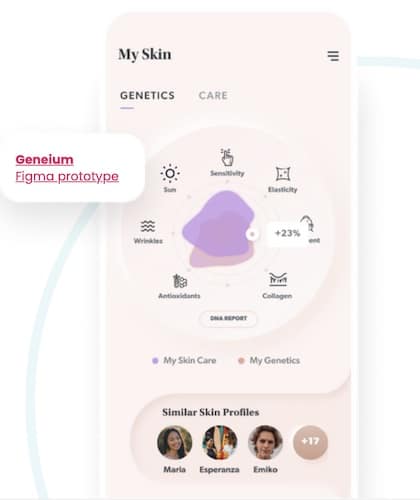About a month ago, a bite of apple stuck on its way to my stomach, and I thought, “Wonderful! It’s time to check what on-demand doctor app development has to offer from a front-row seat.”
To be clear, I haven’t seen a doctor in ages. So, I go to the App Store, look for a relevant app, download a couple, and choose one with the quickest onboarding.
Within 30 minutes, I am on a call with a top-rated therapist, who explains what tests I should take, probable causes, etc. I also got the call summary with recommendations afterward. That’s the power of doctor on-demand services!
If you want to build a doctor on-demand app, skim this blog to cover your bases.
Top Takeaways:
- Two main types of doctor-on-demand applications are a dedicated app for a clinic or hospital and an independent marketplace app partnering with different providers.
- Use ready-made HIPAA-compliant components to add telemedicine and appointment scheduling features to your app faster and on a lean budget.
Table of Contents:
- Step #1: Research and Discover
- Doctor On-Demand Apps Market Trends
- Step #2: Prototype
- Step #3: Design
- Step #4: Develop and Test
- Key Features in Doctor On-Demand Apps
- Step #5: Soft and Hard Launch
- Step #6: Maintain
- Doctor On-Demand App Development Cost
- Challenges of Building On-Demand Doctor Apps
- Our Experience
Embarking on the on-demand doctor app development process involves several key steps to ensure a successful and user-friendly application. Here’s a concise overview:
| Step | Description |
|---|---|
| 1. Prepare Doctor Database | Gather and integrate a comprehensive list of doctors, ensuring accurate and accessible information for users. |
| 2. Create and Validate Prototype | Design a clickable prototype to visualize the app’s interface and functionalities, and validate it with stakeholders. |
| 3. Evaluate Scheduling Tools | Assess existing scheduling APIs or SDKs to determine suitability for integration, balancing functionality and customization needs. |
| 4. Develop the Application | Implement the app’s features using appropriate technologies, ensuring alignment with design and functional requirements. |
| 5. Ensure HIPAA Compliance | Incorporate necessary security measures to protect patient information, adhering to HIPAA regulations and other relevant standards. |
| 6. Conduct Comprehensive Testing | Perform thorough testing to identify and resolve issues, ensuring the app’s reliability and user satisfaction. |
| 7. Launch and Maintain the App | Deploy the app to relevant platforms and provide ongoing support and updates to maintain performance and address user feedback. |
Step #1: Research and Discover
So, let’s say you’ve decided to build a doctor-on-demand app. Where do you start?
Typical false start
The first duh-obvious step is understanding your customers’ needs. To ensure your app is effective, consider your audience’s needs, including easy access to doctor appointment app development features. For instance, providing tools that let patients and physicians securely manage appointments, medical records, and other paperwork can set your solution apart from competitors.
Depending on your business model, your customers will be patients and/or doctors. For example, suppose your goal is creating an aggregator doctor-on-demand app accepting any licensed providers. In that case, you’ll need to work on a dedicated app for doctors besides a standalone patient app.
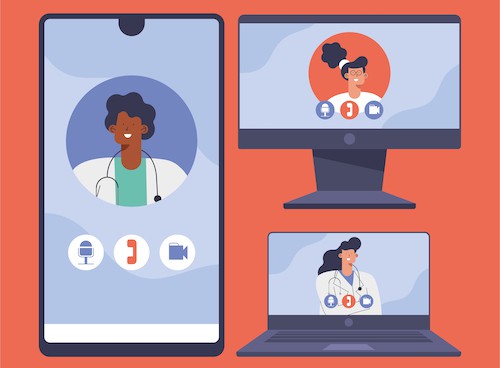
The Visitry platform from our portfolio is a good example of such a marketplace application bringing doctors and patients together. While the platform solves home health staffing for providers, patients and doctors connect using dedicated mobile applications.
However, you may skip building a dedicated doctor app if you plan to provide healthcare services under a particular clinic’s umbrella. First, the clinic may already use an EHR system and telemedicine software with which a patient app can connect.
And if not, you can always work around it by developing a web portal for doctors without having to address the iPhone/Android dilemma (“Do my doctors use iPhones or Androids? Which platform should we support out of the gate? Should I build for both at once?”).
Please read our dedicated blog about these intricacies of app development for healthcare in case you want a deeper dive.
Also Read: How to integrate your mHealth app with an EHR/EMR
Start naturally
But we’re jumping the gun here a little. You see, I’m a little tech-biased, and so I am eager to jump to technology choices. You better start by listing your goals, such as:
- make healthcare services more accessible and/or affordable
- optimize doctors’ schedules and avoid idle time
- reduce operational costs
- reach a new audience
- reduce readmission or emergency room visits
- up profit margins
- comply with MIPS (Merit-based Incentive Payment System)
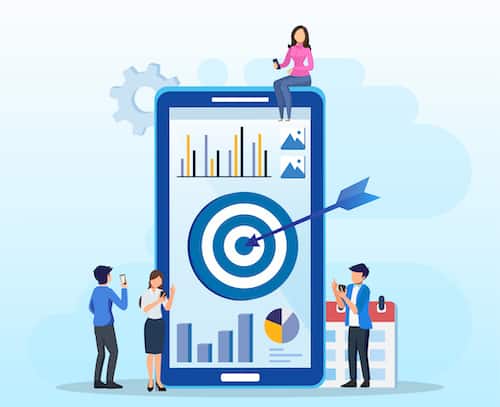
Whatever your goals, the doctor-on-demand software must conform. Ideally, these goals already stem from your target audience’s needs. Otherwise, you must match the goals with the needs. In other words, identify the features that meet customer needs and help you reach your business goals.
As a result, you’ll end up with at least three lists:
- ROI goals
- target audience’s needs
- software features
That’s something you can do on your own. No technical team can do this job better than you. Even the most sharp-witted developers will drag this info out of you. So save yourself a little time and come prepared.
Now you need a team
At this point, you have a vague idea of your app. You may even liken it to other apps on the market and get inspiration from incumbents, like Doctor on-Demand, Amwell, or Medici.
To move further, you now need to talk to someone who knows tech. And not just any tech, but a combination of technologies that will work best for your doctor on-demand app. Developers will get you more lists describing:
- devices and platforms
- mobile/cloud architectures
- ready-made components and APIs
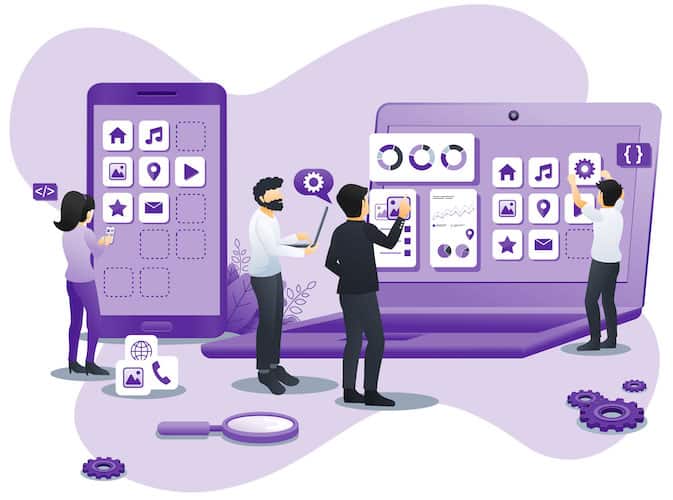
Finally, someone who has built traction-generating apps will help you define:
- user journeys
- product roadmap
- backlog of features
- critical features for an MVP
Also Read: How to develop an MVP
Doctor On-Demand Apps Market Trends
Before you learn how to create a doctor on-demand app, let’s quickly review the market trends, shall we? Here are a few noteworthy stats:
- according to Statista, revenue in online doctor consultations services should reach $25B in 2023
- user penetration for 2023 will be 1.45% and is expected at 1.61% by 2027.
- the average revenue per user (ARPU) amounts to $228
- out of 50 top free medical apps in the App Store, 16 belong to doctor-on-demand applications, with 6 sitting in the top 10
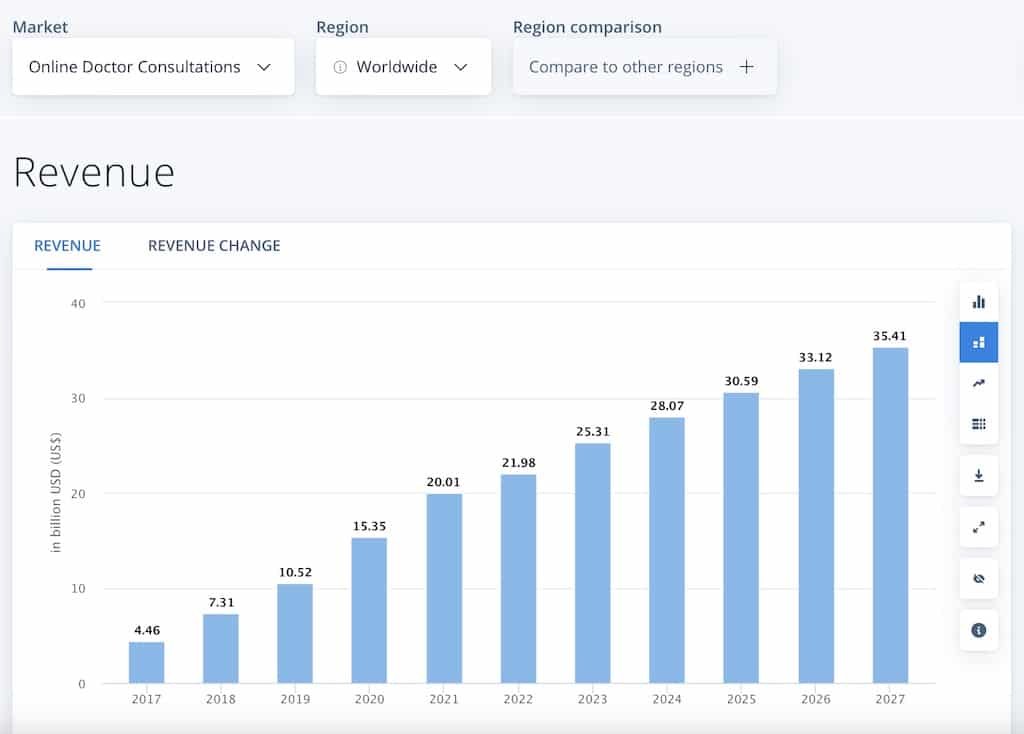 Image credit: Statista, Online Doctor Consultations (all image rights belong to Statista Inc.)
Image credit: Statista, Online Doctor Consultations (all image rights belong to Statista Inc.)
What problems do doctor-on-demand apps solve?
Doctor on-demand software has a lot to offer to both providers and patients. With the general shift toward value-based care, such mobile applications are a powerful tool for democratizing healthcare services.
- accessible care
Both in terms of cost and on-the-go availability. When patients can get immediate care wherever they are at a lower price, we witness a silent revolution.
- personalized approach
Telemedicine is only part of the equation of personalized care. Different health data tracked by smartphones and various sensors unlock remote care and lead to better treatment plans.
- better patient outcomes
As a result, patients receive care faster and of higher quality. Potentially, all their healthcare needs can be effectively addressed within one single app.
Also Read: How to develop a telemedicine application
As for providers, they get their share of advantages too:
- cost savings
- broader outreach
- efficient resource allocation
- higher revenue
Therefore, with the telemedicine market piercing through the stratosphere, building a doctor-on-demand app becomes very lucrative.
The future of doctor on-demand mobile apps
By looking at the trending doctor on-demand apps in the App Store, I can say that the most promising directions include:
- use of smart sensors for enabling ongoing remote care
- offering niche services, e.g., HingeHealth that focuses on muscle and joint care or hims targeting men population
- use of AI to manage doctors’ time as moderately as possible (e.g., triage chatbots)
Top 3 successful doctor on-demand apps
You have probably already heard plenty about Doctor on Demand and Zocdoc — well-known veterans in the field. How about we look at some fresh blood?
healow
Healow is a perfect example of how to start an on-demand doctor app. They offer an EHR-agnostic, comprehensive set of tools for providers, patients, and even payers.
Hinge Health
Hinge Health is interesting because they target people with specific conditions and offer remote personalized plans that include online consultations.
hims
Another h-brand has made it to our list because it’s like Amazon but for men’s health. It’s an ideal image of a doctor-on-demand app specifically for men.
Read more on health and wellness app development to understand how these apps are redefining user-focused care
Step #2: Prototype
In the 2010s, move-fast-and-break-things was pretty ordinary. Founders would start building apps with little digging around. However, today’s competition is so intense that very few can afford to experiment and endlessly pivot.
As you already understand, your doctor-on-demand app will join a fairly crowded place. Therefore, the initial product must deliver on key KPIs and generate enough traction.
How does prototyping work?
To achieve that, we practice rapid prototyping. Think of it as designing a mini version of the app with the most significant screens. Initially, designers work on user flows, draw sketches and low-fidelity wireframes, then iterate toward high-fidelity screens.
These designed screens become a prototype when designers interconnect them and mark interactive UI items that customers can click to get a feeling of how the app works.
Why prototype, again?
The idea is plain and simple: test a prototype with end users, get their feedback and improve the UX/UI to the point where it becomes completely intuitive and fluid. Making such changes in code would cost 10 to 100 times more.
Please note that developers take part in prototyping, too, to an extent. They have a say in whether a proposed design meets Apple’s and Google’s dev guidelines and advise on its complexity and feasibility from the development standpoint.
Main reasons for prototyping:
- validate a UX/UI
- get a product idea out of your head to investors’ hands
Related: UX/UI tips to designing a winning application
Step #3: Design
To make things clear, steps 3 and 4 usually begin simultaneously. Developers already have validated design assets from the prototyping phase to begin coding, setting up servers, etc.
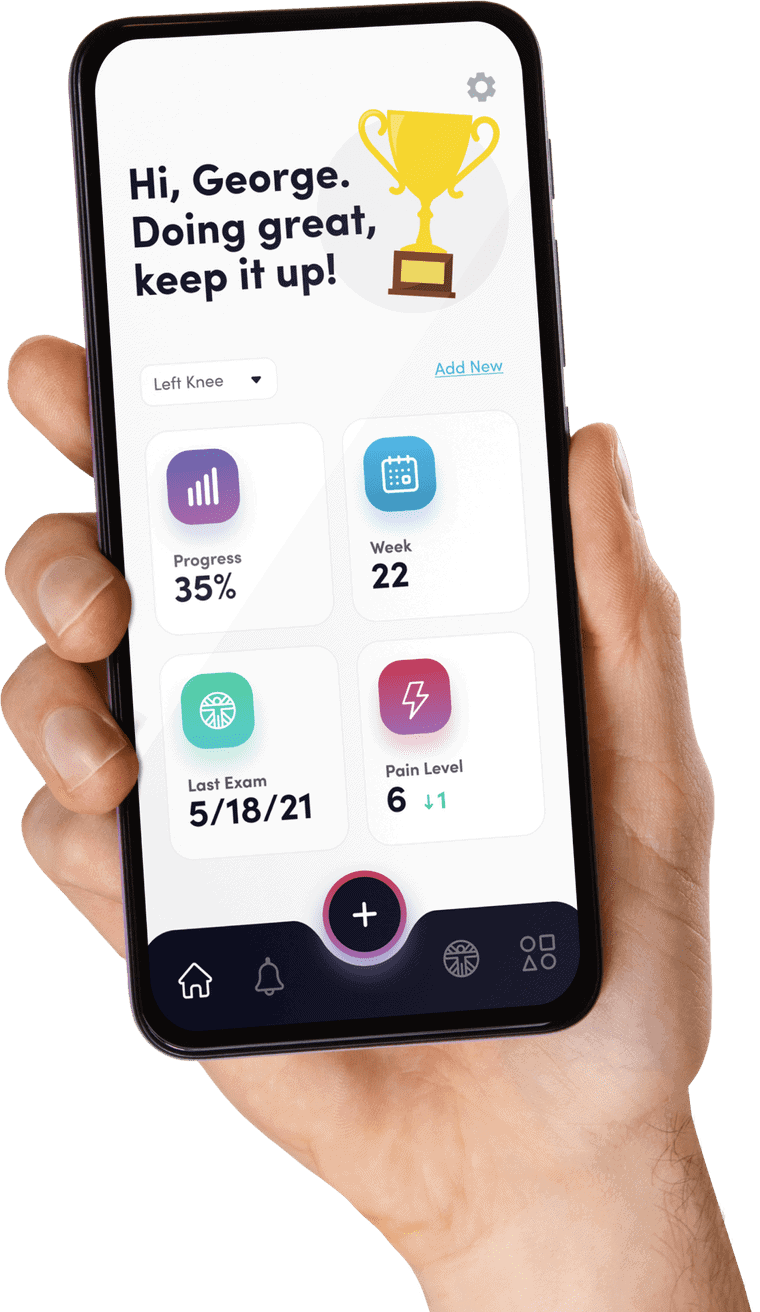 Image credit: Allheartz, on-demand doctor app for physiotherapy from our portfolio
Image credit: Allheartz, on-demand doctor app for physiotherapy from our portfolio
And designers continue working through all the rest of the screens that will go into an MVP. Yes, the MVP that you will initially launch for the public, but I’m speaking too soon here. We’ll cover that in the next section.
As for the doctor on-demand application design, ensure that all UI/UX assets are stored in appropriate systems like Figma or Sketch — you’ll need something that allows simple design-to-development handover.
Step #4: Develop and Test
Ok, doctor on-demand app development may seem boring to you as a founder until you get the first build on your smartphone to try it out. At the same time, to get desired results, you must keep a few things in mind.
To bring your vision to life, you’ll need to partner with a team that specializes in development services tailored to healthcare. From designing secure virtual consultation features to integrating HL7-compliant medical records management, experienced developers can ensure your app meets both user expectations and regulatory standards. By leveraging ready-made telehealth components, you can accelerate time to market without compromising quality.
Common-sense development tips
First of all, you won’t build an on-demand doctor app with all the features from the backlog. You only need a polished MVP with 2-3 key features that set the wheel in motion for early adopters.
But before you arrive at the MVP, you’ll be iterating on a proof of concept — a doctor-on-demand app with one key feature and many missing screens. The proof of concept is necessary to:
- validate an app idea further in real-life scenarios
- incorporate user feedback
- pitch investors with a tangible asset
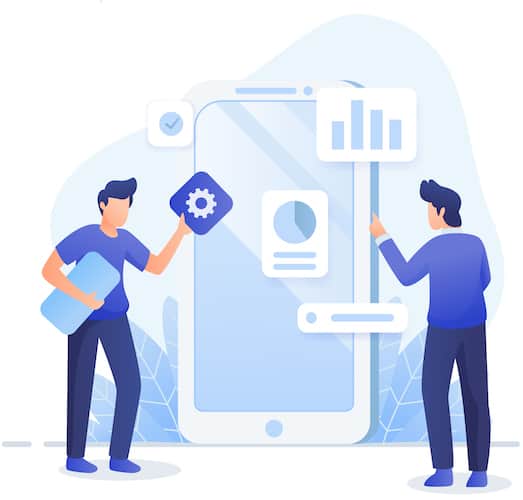
Things that depend on you
Among other things you need to consider during on-demand doctor app development are the following:
- follow the agile development methodology
Agile development means you get to play with a new build at the end of each sprint, at least every two weeks. Together with a product manager, you’ll decide what functionality will be realized during each 2-week sprint.
You and your in-house team must get involved early on and start providing feedback from the very beginning. Don’t hold on to the feedback, thinking you will share it once the app is more or less complete.
- insist on proper QA procedures
Insist on proper testing from the start — even early app versions should be scrutinized by QA engineers. So if you see bugs from the very start, expect more later on, and to avoid that, ask the partner to double down on QA.
Related: A Complete Guide to Quality Assurance
- organize your own team
Sometimes, people on the same team may have conflicting views about a product vision, even though it’s already been formalized with prototyping. Make sure everyone is on the same page and channels consistent information to developers.
Things that depend on developers
- ongoing communication
It’s up to you whether your development partner will send you weekly or biweekly reports as long as that happens regularly. There should also be other tools like Slack that allow direct communication with team members.
- DevOps
You probably don’t know much about that, but it makes sense to ask your devs if DevOps is part of their development process. A proper DevOps setup includes automated testing and deployment, meaning coders don’t waste time turning code into another app build.
Also Read: A Guide to DevOps Implementation
- proactive stance
A qualified team will always bounce ideas off you and your team during doctor on-demand mobile app development. If they only ask questions and don’t offer alternative solutions, you’re working with the wrong team.
- transparent progress tracking
Finally, your partners must provide you with tools for tracking their work, e.g., ClickUp. Don’t be shy to ask how precisely they use these tools because they can be pretty intimidating without a primer.
To code or not to code?
There’s no need to reinvent the wheel. Some features already exist as code snippets, and developers can plug them in to fasten time to market and lower the overall cost of on-demand doctor app development solutions.
For example, at Topflight, we use our own ready-made Telehealth Components, considered low-code or no-code solutions. If you take and use them as is for scheduling, audio and video chatting, and messaging, that’s a no-code approach. Devs plug them into the code as is. Alternatively, you can customize these code pieces to enable unique functionality, and that’s low code.
As for the tech stack, it depends on your partner’s expertise. Our preferred technology stack is Node, React, AWS cloud solutions, and React Native. That’s a high-level overview as developers revert to more building blocks when creating scalable apps.
Speaking of the features customers expect to find in a doctor-on-demand app, let’s list a few.
Key Features in Doctor On-Demand Apps
Efficient patient scheduling software development can significantly streamline virtual consultations by providing physicians with real-time availability while ensuring appointments are seamlessly recorded in medical records. Features like automated notifications and secure document sharing further elevate the patient experience.
Obviously, we can’t cover all the app features you can think of during doctor on-demand app development here, but let’s discuss the most exciting ones.
Authorization
Registration and sign-in become exciting when users need to input minimum data and get the most value immediately. Use FaceID/TouchID and 2-factor authentication.
User profile
Here’s where patients can track their visits, review health records, treatment plans, etc.
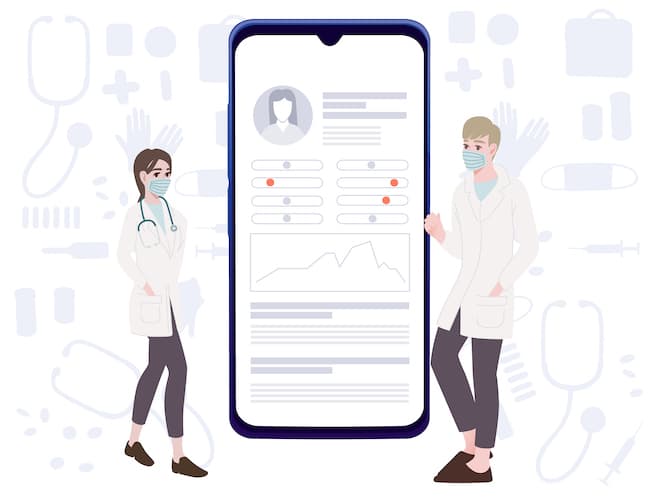
Settings
Settings usually include all minor options that don’t deserve a dedicated screen, for example, dark mode, feedback, sensor integrations, FAQ, etc.
Notifications
Patients will schedule virtual visits, so reminding them of upcoming appointments is vital to get medical help on time. Notifications can also be used as medication reminders, pending refills, and ads for new services or campaigns.
Real-time chat
Communicating with doctors in real-time via chat is critical to any doctor on-demand application. It would help if you envisaged image/video sharing to help doctors diagnose and patients review their results in the app.
Audio and/or video calling
Telemedicine is the cornerstone of any doctor-on-demand app. Fortunately, you don’t need to build audio and video calls from scratch: plenty of off-the-shelf solutions exist. For instance, you can use our Telehealth Components.
Also Read: HIPAA Compliant Video Calling and Scheduling
Appointment scheduling
One-tap scheduling goes hand in hand with assigning the right medical specialists based on patients’ input about their symptoms. One of our no-code HIPAA-compliant components allows patients to schedule an appointment without writing lengthy code.
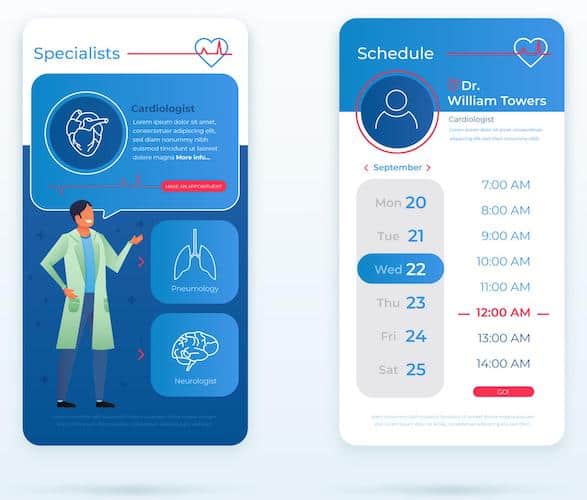
Also Read: HIPAA-Compliant App Development Guide
Doctor look-up
There should also be a list of all relevant doctors so that users can check their ratings, reviews, etc.
Health records
We already have health records in Apple Health or Google Fit. However, these same records may have more granular details inside a doctor-on-demand app or include some data not available in stock iOS and Android health apps.
Payments
We need the option to allow patients to add their credit and insurance ID cards. That’s where all bills will be displayed.
Advanced AI features: translations, chatbot, triage
AI is not a feature per se, but using this technology, we can implement an intelligent chatbot to help triage. Or we can add automatic translation to support more customers. And that’s just the tip of the iceberg when adding AI/ML features to doctor-on-demand software.
3rd-party integrations
A comprehensive doctor-on-demand app should work with pharmacies and payers. We might also need to integrate with legacy systems.
Prescriptions
Meds refills ordering and tracking.
Related: How to develop a e-prescription application
Lab results
Viewing test results right inside the app is pretty handy.
Admin panel options
Of course, there are also many options for providers and for managing the whole ecosystem. It would take another blog to go through all of them. So get in touch to discuss your specific needs.
Step #5: Soft and Hard Launch
When you decide to launch an on-demand doctor app, it’s crucial to have a strategic plan in place. By starting with a soft launch in select regions, you can gather feedback from key stakeholders, such as physicians and patients, to fine-tune your app before a broader rollout. This approach ensures a patient-centric experience while aligning with security and compliance requirements like HIPAA and HL7 standards.
One of the biggest mistakes you can make during on-demand doctor application development is to release the app for everybody at once.
It’s advisable to proceed with caution and limit the initial release by geography or deploy a solution with select customers. This seemingly timid approach may have a dramatic effect on the success of the app. The thing is, the general public rarely gives a second chance.
When you release the solution, it must be polished and tested from all angles, including edge cases.
Step #6: Maintain
As for maintenance, it’s an ongoing routine accompanying all topflight apps. Ideally, you’ll monitor at least two areas: bugs and user engagement patterns. And if bugs sound all too familiar (even iPhone’s OS throws out a thing or two at random), user engagement may raise some questions, right? How do you measure that?
In reality, it is pretty simple. Mobile apps get special code snippets, just like your site uses Google Analytics code to track clicks. As a result, you can understand how users navigate between the app sections, where they spend most of their time, whether they get stuck at some point, etc.
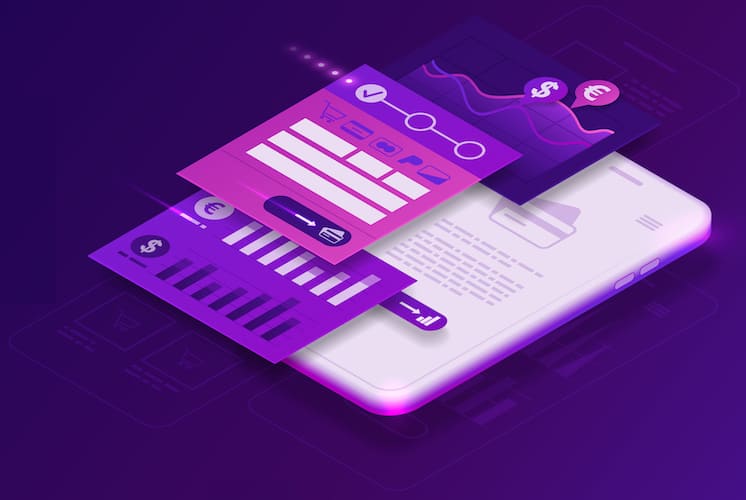
Besides this silent (and anonymous) tracking, you may want to add a service like UserVoice. Such platforms allow you to channel negative feedback away from the App Store and Google Play while stimulating more positive reviews at the same time.
The gathered analytics must be used for future updates and releases. Fortunately, plenty of automated platforms help you catch and identify bugs, monitor user engagement patterns, and process customer feedback.
And that’s basically the gist of how you build a Practo-like app.
Doctor On-Demand App Development Cost
If someone tells you that you can create an on-demand doctor mobile application spending anywhere between $60K and $360K, they will be right. You’ll end up with a different app, though.
$60K may be enough for a proof of concept (one fundamental feature with little polish) or a simple app that hardly provides more than a live chat with doctors. And $360K brings you closer to a Zocdoc MVP — something delightful enough for a public release to test the waters.
Obviously, you can’t have everything the Zocdoc app provides on this budget — they’ve been humming on it since 2011.
Related: App Development Costs: The Ultimate Breakdown
That’s precisely why software development companies always avoid giving estimates without a proper discovery phase: all apps are different. Unlike others, though, we offer a flexible pricing structure focused on delivering real traction.
If you’re looking to create an on-demand doctor app that balances functionality with affordability, partnering with a reliable development company is essential. A team experienced in digital healthcare can help integrate critical features such as virtual consultations, secure access to medical records, and innovative monetization strategies.
You may also be interested in our guide on healthcare app development cost.
Related Article: White Label Telemedicine Solution
Challenges of Building On-Demand Doctor Apps
Building a doctor-on-demand app often involves navigating challenges like data synchronization with EHRs and ensuring robust security for sensitive medical documents and records. A patient-centered approach is key, as is focusing on stakeholders’ needs, such as physicians and administrative staff, who will use the app daily. Leveraging healthcare payment solutions for seamless transactions is another critical aspect of addressing operational hurdles.
You will likely hit a few break walls on your journey to make a doctor on-demand app. What are they, and how do you avoid them? Here are a few common challenges.
Supply-demand math
If your doctor-on-demand mobile app is anything like Zocdoc, you’ll need to solve the supply and demand puzzle. New customers should always have a choice of doctors in the app, and doctors expect the same before committing.
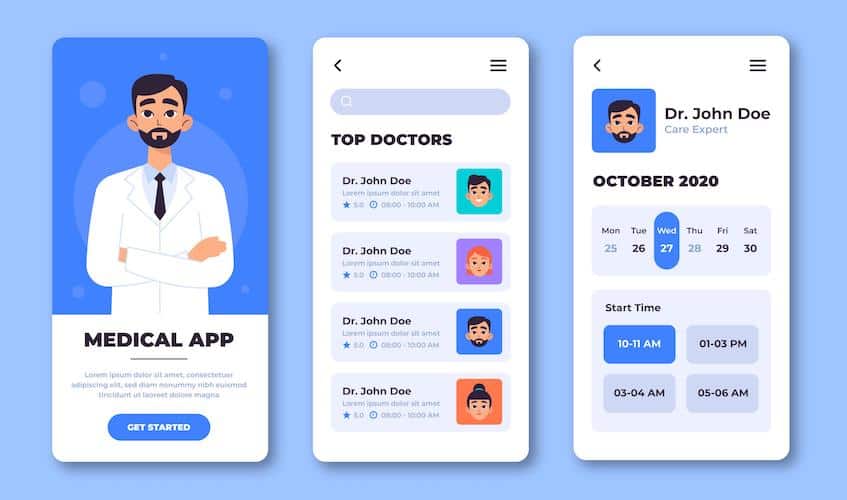 Simplifying onboarding for providers and making their experience super smooth should help. This task is easier if you employ doctors or partner with a clinic: then it’s just about migrating the database with doctors into the app.
Simplifying onboarding for providers and making their experience super smooth should help. This task is easier if you employ doctors or partner with a clinic: then it’s just about migrating the database with doctors into the app.
Uniqueness
Having unique features matters if you are going after an aggregator type of app. However, this is not true for many healthcare providers who want to add telemedicine and elevate the patient experience.
After all, there’s a certain number of features that you can implement and a list of insurance carriers to integrate with. Therefore, providing a buttery smooth user experience becomes the key.
Also Read: Patient Intake Management Automation
EHR, Apple Health, and other integrations
Dedicated health services like Apple Health, Google Fit, and Samsung Health keep a wealth of patient data on their smartphones. And so, this medical history data must sync with EHR employed on the providers’ side.
Another point to consider is integrating with legacy solutions that may include practice management platforms, CRMs, and other solutions.
The curse of multiple front ends
Let’s count: one app for patients, one for doctors, and one for admins. That’s three already, and God bless if you want to cover smartwatches or other platforms too.
The best workaround is to build a web-based front end for providers, so there’s no need to write code for iOS and Android. Another thing you could try is to rely on existing 3-party solutions. For example, if providers only need video calling, let them use Zoom or similar services supporting HIPAA compliance.
As for the patient app, use React Native or similar tools that make it possible to create doctor on-demand mobile apps for iOS and Android at once.
HIPAA compliance
That’s like a given for any healthcare app, right? Still, I must stress that even your software developer’s processes (not just code) must comply with HIPAA regulations while they are busy developing doctor on-demand apps.
Our Experience
One exciting app that resembles the doctor-on-demand mechanics is Visitry. It’s a b2b marketplace akin to Uber, bringing healthcare staffing agencies and clinicians together on a single platform. Clinicians set their own schedules and choose home care jobs based on their availability.
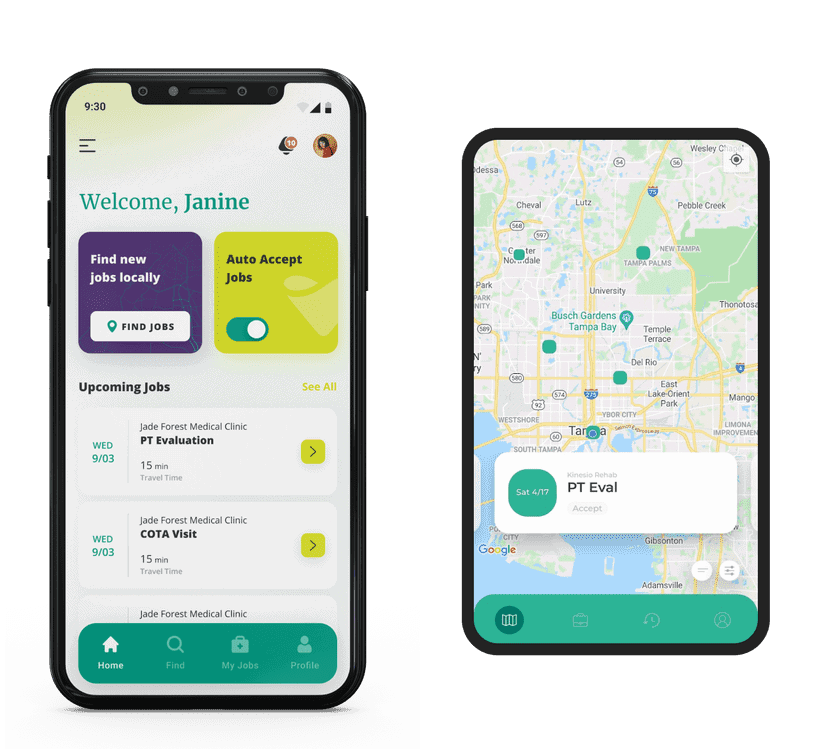
We’re also working on a super cool on-demand platform for niche practitioners, providing them with all the tools you’d expect from a doctor on-demand app. And that’s about as much as I can share with you because it’s currently under NDA.
Get in touch to discuss your vision for a doctor on-demand app today.
[This blog was originally published on 3/22/2023 but has been updated with more recent content]
Frequently Asked Questions
What are the major trends in on-demand app development?
Providing niche services, e.g., physiotherapy; applying remote care techniques; AI enhancements, and IoT integrations.
What are the key features of doctor-on-demand software?
Appointment scheduling, chat, audio/video calls.
How long does it take to build on-demand app like Practo?
About 6-9 months for a releasable MVP if we stick with our ready-made no-code telehealth components.

